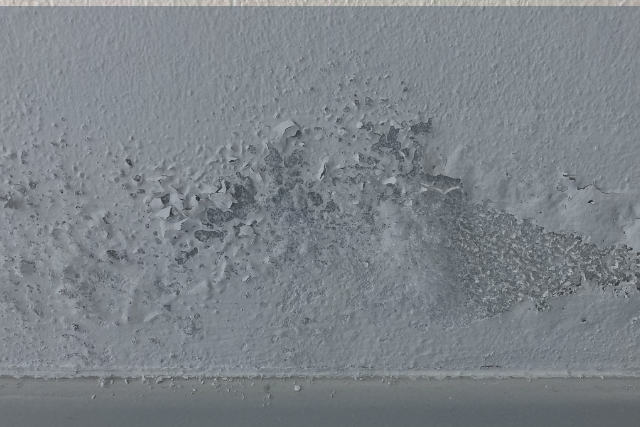A few months ago, a friend called me with a strange concern about his office. He said, “Man, something’s not right. People are getting sick more than usual—headaches, allergies, fatigue. And productivity is way down. We checked the air system, cleaned everything, but it still doesn’t make sense.” What he didn’t realize is that hidden mold at work can go undetected for months, quietly affecting health and performance without any visible signs.
When I visited the building, everything looked fine at first glance—clean, recently painted, no visible stains or leaks. But when we ran moisture tests and inspected the HVAC system, we found hidden mold growing inside the air ducts and behind an exterior wall.
The silent culprit had been there all along—affecting his entire team without anyone noticing.
Why Are Offices So Vulnerable to Mold?
Office buildings can actually be more prone to mold growth than homes.
Why?
- HVAC systems run constantly with minimal maintenance
- Most windows are sealed shut
- Ventilation is limited in storage rooms, meeting areas, or closed offices
- Materials like carpets, acoustic panels, and drop ceilings trap moisture easily
Small leaks or daily condensation inside ducts often go unnoticed. No one thinks to check behind filing cabinets or inside air units—until the symptoms show up.
How Mold Impacts the Body (and Your Workday)
Mold spores are microscopic and float freely in indoor air. When employees breathe them in daily, even in small amounts, the effects can build up—physically, mentally, and professionally.
Common Symptoms of Mold Exposure at Work
1. Frequent Headaches
Poor air quality caused by spores can trigger headaches or migraines, especially in sensitive individuals. These often get worse during the workday and improve after leaving the office.
2. Fatigue, Brain Fog, and Low Focus
Even after a good night’s sleep, a contaminated environment can lead to constant tiredness, poor concentration, and slower decision-making.
3. Eye, Nose, and Throat Irritation
Red eyes, sneezing, nasal itchiness, or a scratchy throat may appear mild at first but are early warning signs of air contamination.
4. Persistent Dry Cough or Congestion
The respiratory system reacts with coughing or mucus, even when there’s no cold. In sealed environments, this can become a daily problem.
5. Worsening Asthma or Allergies
For those with respiratory conditions, mold can act as a severe trigger—causing flare-ups, increased medication use, and in serious cases, missed workdays.
Is There Mold in Your Office? Ask These Questions:
Even without visible stains, there are key warning signs you can check for:
- Do symptoms go away when employees leave the building?
- Is there a certain area where the air feels heavy or stale?
- Has the HVAC system been serviced or cleaned recently?
- Are there old carpets, drop ceilings, or exterior-facing walls?
- Have there been past leaks or condensation that weren’t addressed properly?
If you’re answering “yes” to more than one, it’s worth scheduling a professional mold evaluation.
What Can Companies Do About It?
The first step is to request an environmental inspection—not just a cleaning, but a technical assessment. This includes:
- Measuring indoor humidity
- Inspecting ventilation and ductwork
- Analyzing building materials for moisture retention
- Testing air quality and identifying spores if needed
With this data, targeted solutions become possible:
From cleaning specific areas and replacing ductwork to improving insulation or ventilation.
These actions don’t just prevent health issues—they show employees that their well-being matters, improving morale and reducing absenteeism.
In Summary: Mold Can Quietly Undermine Your Business
Mold in office environments is often invisible but powerful. It affects the well-being, performance, and retention of your workforce. Early detection can save thousands in health costs, lost productivity, and structural repairs.
If something feels wrong in the air at work, listen to the signs—and act before the damage spreads further.
Taking responsibility for your indoor environment is one of the smartest decisions a company can make.
If you suspect hidden mold at work, don’t wait for visible stains to appear. Learn how small leaks can lead to big mold problems, or discover HVAC-related mold risks in multi-unit buildings that many property managers overlook. You can also explore the early signs of mold in buildings to act before symptoms spread across your team.
A few months ago, a friend called me with a strange concern about his office. He said, “Man, something’s not right. People are getting sick more than usual—headaches, allergies, fatigue. And productivity is way down. We checked the air system, cleaned everything, but it still doesn’t make sense.” What he didn’t realize is that hidden mold at work can go undetected for months, quietly affecting health and performance without any visible signs. According to the CDC, prolonged exposure to indoor mold can trigger a wide range of physical and cognitive symptoms.



